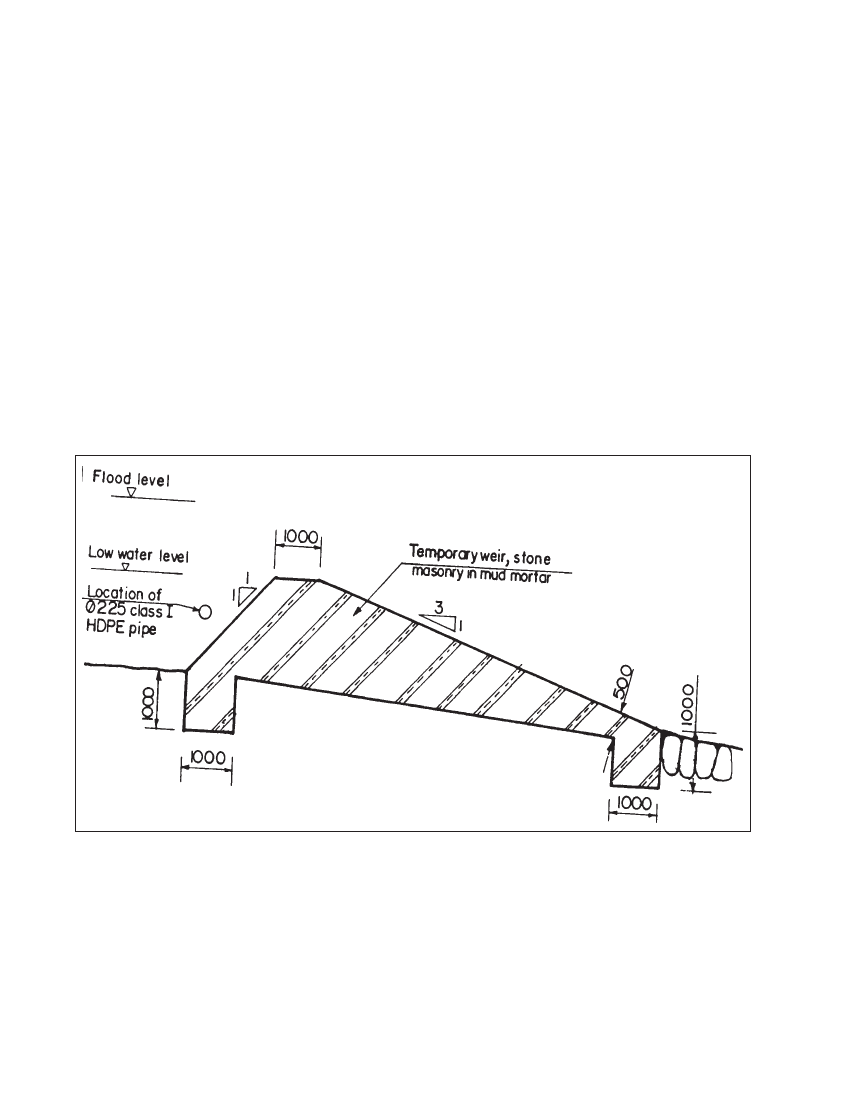
28 CIVIL WORKS GUIDELINES FOR MICRO-HYDROPOWER IN NEPAL
Once the river discharge decreases a temporary weir can be
usually reconstructed at little cost. The repair and maintenance
work on a temporary weir can be minimised by building the
weir using rock outcrops, large boulders and other natural
protection of the river. Good management of cash for the
annual weir “rebuild” is required. In most cases, a temporary
weir is suitable only for the diversion of flows below 1 m3/s.
This fits well into the micro-hydro discharge range, since the
maximum flow in micro-hydro schemes rarely exceeds
5001/s. For micro-hydro schemes, a temporary weir is the
preferred option over more permanent structures. This is
because most rivers flowing through the mountains and the
middle hills of Nepal carry large boulders during the monsoon
and therefore any structure built across such rivers is not
likely to survive.
3.6.3 GABION WEIR
Gabions have been used extensively in the past, for both
micro-hydro and irrigation intake weirs, but the result
has not been very encouraging. The gabion wires are
vulnerable to damage by boulders moving during floods,
and after a few are broken the entire gabion structure
may collapse. Gabions are therefore unsuitable in river
Types IB and 1C.
However, if there is no significant boulder movement along
the river stretch at the intake area a gabion weir may be
possible. If properly designed and constructed, the
advantage of a gabion structure is that, unlike concrete
and masonry structures, it can tolerate some ground
movement without significant damage. The Jhankre mini-
hydro weir is an example of a gabion weir structure (see
Figure 3.8 and Box 3.1). The weir design should include
checking:
Safety against scour (by founding on rock or large boulders,
or by constructing a ‘counterweir* downstream to form a
stilling pool)
Seepage control (by using an impermeable membrane)
Stability against overturning and sliding.
Safety on bearing capacity of the foundation.
Note: All dimensions are in mm.
Figure 3.7 A temporary weir proposed for the kw Thorong Phedi micro-hydro scheme, Morang, Nepal.
Note the cut-off walls and riprap at downstream face.